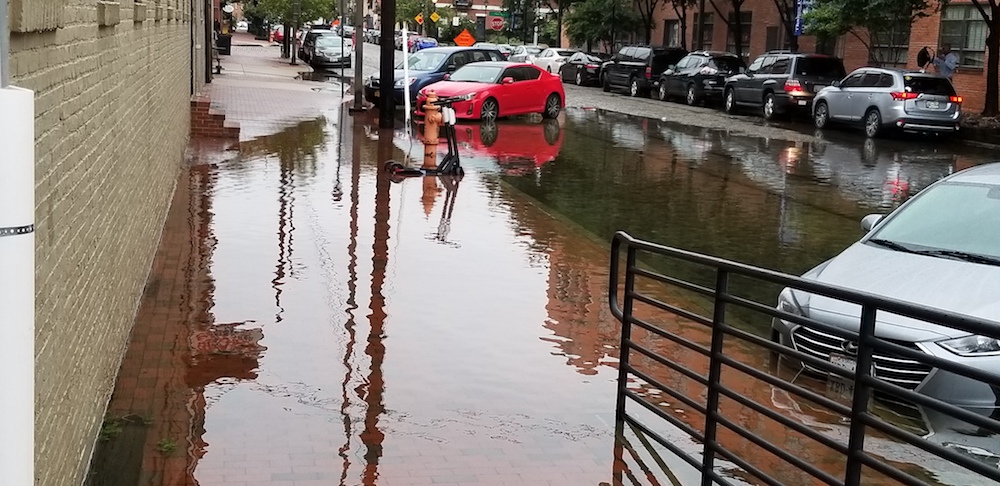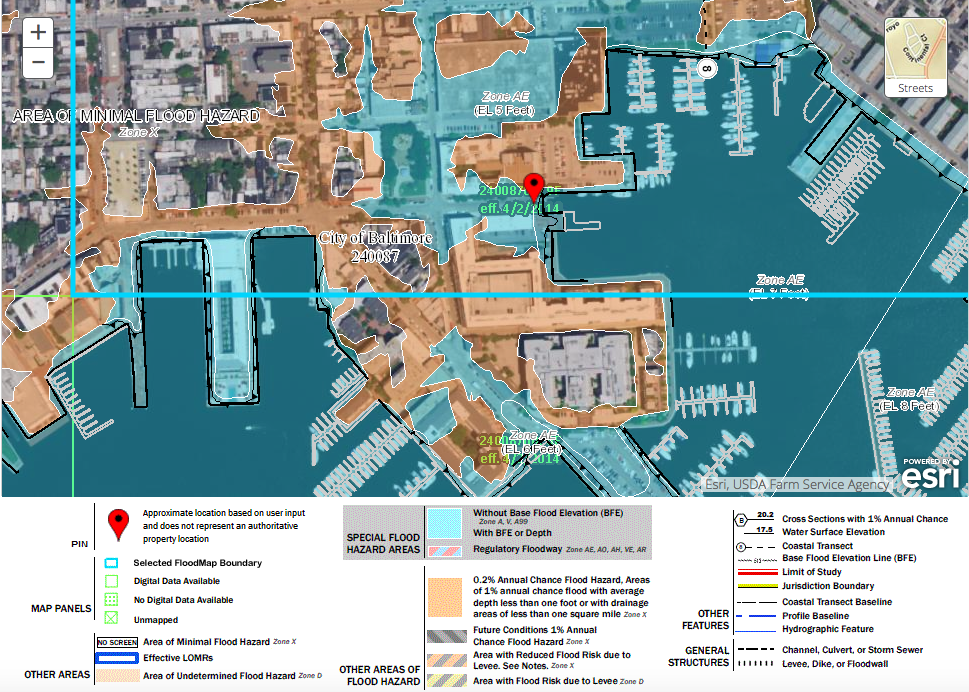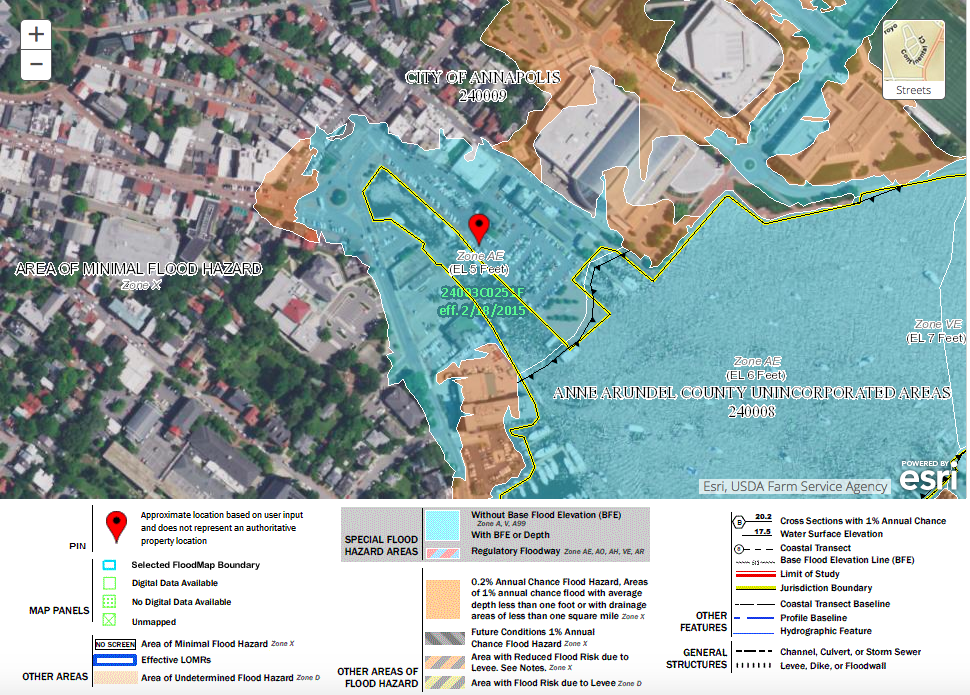Connecting state and local government leaders
Observations of a climate change tourist along Baltimore’s low-lying waterfront.
BALTIMORE — Near high tide on a Wednesday morning in late September, the driver of a white van from a local security alarm company paused for a moment near the eastern end of Thames Street in the historic Fells Point neighborhood before driving through the shallow waters that blocked the entrance to a condominium parking lot. The usual advice of “turn around, don’t drown” was not a concern.
The morning before, waters crept up to cover much of the front wheels of a misfortunately parked car and two nearby Bird e-scooters that had been dropped off on dry land that can flood during higher tides.
Historically, Thames Street has been above sea level, but nuisance flooding allows the waters of Chesapeake Bay to inundate the low-lying cobblestones and sidewalks at this particular spot. It’s pretty minor compared to major flooding that Fells Point and Baltimore’s Inner Harbor can experience—like what happened 15 years ago with Hurricane Isabel. As Baltimore magazine wrote a few years ago in a feature on the impacts of rising sea levels in Maryland, Fells Point is one of the neighborhoods “where most residents and business owners have already become dedicated sandbaggers in the wake of various hurricanes and tropical storms.”

Baltimore breathed a sigh of relief last month when Hurricane Florence stayed well south of the region, but high tides, as Route Fifty saw over a few days during a recent visit to Baltimore, still can be a hassle. Residents living along the water know that it doesn’t take a tropical system to send water levels soaring. Moreover, researchers are still trying to understand the influences of slow-moving ocean Rossby waves have on bringing higher-than-expected tides to parts of the coast.
This Federal Emergency Management Agency flood map should give you a better idea of what’s going on in Fells Point: the areas of dry land in blue are included as “special flood hazard areas,” that includes the eastern end of Thames Street. Areas shaded in orange—pretty much the rest of the neighborhood—are “other areas of flood hazard.”

Thames Street is a good place to better appreciate the incremental impacts of nuisance flooding. So is Dock Street along the Annapolis waterfront. The morning Route Fifty was checking out high tides in Fells Point, Maryland’s capital city was also dealing with nuisance flooding. Again.

It came on the heels of a high-water event along Dock Street, one of the main tourist draws in Annapolis, a few days earlier that prompted the Pip’s Dock Street Dogs to set up a makeshift walkway “using sand bags as stepping stones to allow visitors to keep their shoes dry,” the Capital Gazette reported. The newspaper checked in on the city’s plans to improve flood mitigation for vulnerable areas along its waterfront:
The city has plans to curb downtown flooding but is still awaiting federal funding to bring the project to fruition. The flood mitigation project for the Compromise Street side of City Dock is under design, with design completion expected in the first half of 2019, said the city’s Public Works Director David Jarrell in an email.
At that time, the city plans to put the project out for bids, with construction starting in late 2019 or early 2020, Jarrell said. That is contingent on approval of the $3 million FEMA grant for the project. The state has approved $2 million for construction, and the city has $1.5 million approved in its capital program, Jarrell said.
Annapolis and Baltimore are the top two U.S. cities that have seen the increases in the number of days of nuisance flooding annually. According to a 2014 National Oceanographic and Atmospheric Administration technical report documenting high-tide flooding, the average number of nuisance flood days between 1957 and 1963 was 3.8 in Annapolis and 1.3 in Baltimore; between 2007 and 2013, the number in Annapolis was 39.3 days and 13.1 days in Baltimore. That’s a 925 percent increase in Annapolis and 922 percent increase in Baltimore.
While the increase in days of nuisance flooding is particularly pronounced in Annapolis and Baltimore, other cities seeing more high-tide flooding include Atlantic City, New Jersey; Charleston, South Carolina; Norfolk, Virginia; Philadelphia, Pennsylvania; Port Isabel, Texas; and San Francisco, California.
Hardening Waterside Infrastructure
If Fells Point is a good place to see nuisance flooding, it’s also a good place to see what it takes to adapt to living with periods of high-tide flooding. Knowing where and when to sandbag and keeping an eye on the tides is important. But rethinking physical infrastructure is also key as cities and developers continue to spend a lot of time—and money—reactivating long moribund waterfronts into vibrant neighborhoods and economic drivers. Baltimore included.

The swanky Sagamore Pendry Baltimore hotel, which sits in an architecturally stunning 104-year-old Beaux Arts warehouse on the former Recreation Pier along Thames Street in Fells Point, is a good example of the challenges waterside construction can pose when trying to mitigate flood risks.
The gradually sloping ramp up from street level to the hotel lobby, bar and Rec Pier Chophouse is the most obvious design accomodation to deal with Fells Point’s flood risks. Others are harder to see.
In an article for Traditional Building, Todd Harvey, partner in charge of Beatty Harvey Coco Architects LLP, discussed the quandary architects and developers faced with adapting the Recreation Pier site in an era of rising sea levels.
The hotel’s waterfront location presented other issues. Floodplain requirements made it necessary to raise the floor of the building by three feet and flood-proof the perimeter of the building.
Says Harvey, “The walls around the building are kind of like a bathtub to keep water out, so at all the entrances, there are floodgates and flood doors, and there’s waterproofing underneath the building to keep water from coming up from the bay. It was a challenge doing that within an existing, historic building, and incorporating those features without them being noticeable.”
That type of flood mitigation work doesn’t come cheap. But in order to live, work and play next to the water, cities, developers and residents living in low-lying vulnerable coastal spots have no choice but to make difficult and expensive decisions to coexist and stay above the water in the years and decades to come.
Michael Grass is Executive Editor of Government Executive’s Route Fifty and is based in Seattle.

NEXT STORY: ICE seeks robust video evidence management




